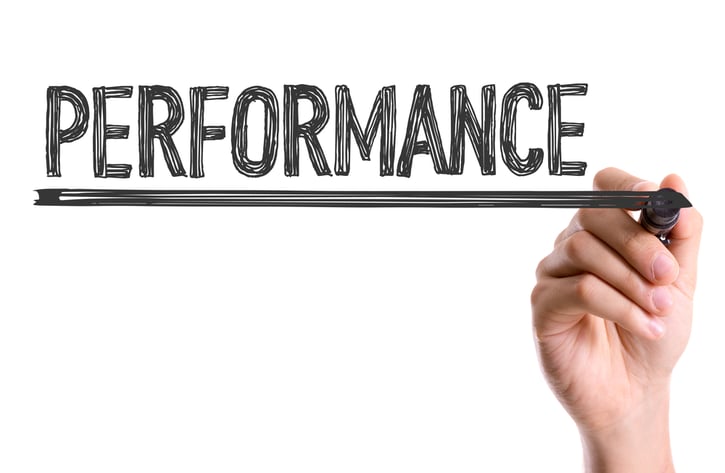- ›
- Glossary
- ›
- Driving Organizational Excellence: The Role of Performance Management
Hassle-free scheduling
Time tracking and leave management in one place
User-friendly software
Perfect for 10 - 500 employees
Free onboarding and support
- Are Companies Required to Pay Out PTO? Understanding the Laws
- How to Respond When an Employee Calls in Sick: Best Practices and Tips
- FAQ: Can salary workers get overtime? Everything Employers Must Know
- How to Create a Clocking In and Out Policy That Works + Free Template
- Employee Forgot to Clock In or Out? Here’s What Happens & How To Fix It
Hassle-free scheduling
Time tracking and leave management in one place
User-friendly software
Perfect for 10 - 500 employees
Free onboarding and support
Driving Organizational Excellence: The Role of Performance Management
-
Written by: Rinaily Bonifacio
-
Last updated: 15 January 2025

In the article we dive into performance management, a crucial aspect of fostering a highly motivated workforce.
Table of contents
- What is performance management?
- The importance of performance management
- Benefits of performance management
- What are the key performance indicators?
- Implementing effective performance management at the workplace
- Technological solutions to performance management
- Integrating performance management with talent management strategies
- Overcoming challenges in performance management
- Best practices for performance management
- Conclusion
- Frequently Asked Questions
What is performance management?
Performance management is a systematic process designed to improve individual and team performance within an organization.
It aims to align individual goals with organizational objectives, track progress, provide valuable feedback, and empower employees to enhance their skills and capabilities.
The performance management program creates an environment conducive to growth and excellence by establishing clear expectations and offering ongoing support.
Key elements of effective performance management
-
Goal setting: Establishing clear and measurable objectives for individuals and teams, providing direction and purpose.
-
Regular performance monitoring and feedback: Ongoing assessment of progress, timely feedback, and constructive guidance for continuous improvement.
-
Development and training opportunities: Offering relevant resources and programs to enhance employee skills and knowledge for better performance.
-
Performance appraisal: Formal evaluation of achievements, strengths, areas for growth, and setting future goals.
-
Recognition and rewards: Acknowledging exceptional efforts and providing incentives to motivate and reinforce positive performance.
The importance of performance management
Performance management is paramount for organizations aiming to maximize productivity and achieve sustained success. It provides a framework to set clear expectations, monitor progress, and provide feedback to employees, enabling them to perform at their best.
By aligning individual and team goals with organizational objectives, performance management ensures a cohesive and focused workforce. It fosters a culture of continuous improvement, encourages professional development, and drives employee engagement.
An effective performance management system ultimately fuels organizational excellence by optimizing individual performance and facilitating collective success.
Benefits of performance management

Performance management brings numerous benefits that contribute to the growth and success of organizations. Let's explore five key benefits along with their descriptions:
Enhanced employee performance and productivity
Performance management provides a structured approach to set goals, monitor progress, and offer feedback. Clarifying expectations and providing regular guidance empower employees to perform at their best.
This leads to improved productivity, efficiency, and overall performance, as individuals understand their roles and work towards achieving organizational objectives.
Increased employee engagement and motivation
A well-implemented performance management system creates an employee sense of purpose and ownership.
It fosters a culture of engagement by involving them in goal setting, providing feedback, and recognizing their achievements. Engaged employees are motivated, committed, and passionate about their work, leading to higher job satisfaction and reduced turnover rates.
Useful Read: 6 Metrics to Measure Employee Engagement: The Employers Guide
Alignment of individual and organizational goals
Performance management ensures that individual goals are aligned with the broader objectives of the organization.
By cascading organizational goals down to individual levels, employees can clearly understand how their work contributes to the overall success of the company. This alignment promotes synergy, collaboration, and a shared sense of purpose among team members.
Continuous learning and development
Performance management systems provide opportunities for professional growth and development. By identifying areas for improvement and offering training programs, employees can enhance their skills and acquire new knowledge.
Ongoing learning and development contribute to individual growth, enabling employees to adapt to changing job requirements, and contributing to organizational innovation.
Effective recognition and reward systems
Performance management facilitates fair and objective evaluation of employee performance. This evaluation serves as the foundation for recognition and rewards based on merit.
By acknowledging and rewarding exceptional performance, organizations can reinforce positive work behaviors, boost employee morale, and create a culture of appreciation. A well-structured recognition and reward system further motivates employees to strive for excellence.
Useful Read: Weighing the Pros and Cons of Performance-Related Pay
What are the key performance indicators?
Key Performance Indicators (KPIs) are quantifiable metrics used to measure the performance and progress of an individual, team, department, or organization in achieving specific goals and objectives.
KPIs vary depending on the nature of the business and the goals being pursued, but they generally reflect critical aspects of performance that are essential for success. Here are a few examples of common types of KPIs:
-
Financial KPIs: These indicators focus on financial performance and include metrics such as revenue growth, profitability, return on investment (ROI), gross margin, or cash flow.
-
Operational KPIs: These indicators measure the efficiency and effectiveness of operational processes, such as cycle time, productivity, quality levels, customer satisfaction, or inventory turnover.
-
Customer KPIs: These indicators assess the organization's performance in meeting customer expectations and include metrics such as customer retention rate, customer satisfaction score (CSAT), Net Promoter Score (NPS), or average response time to customer inquiries.
-
Employee KPIs: These indicators gauge employee performance, engagement, and development. Examples include employee turnover rate, training hours per employee, absenteeism rate, or employee satisfaction.
-
Sales and Marketing KPIs: These indicators track sales and marketing performance, such as lead conversion rate, customer acquisition cost (CAC), sales growth, market share, or marketing return on investment (ROI).
-
Quality and Compliance KPIs: These indicators measure adherence to quality standards, regulatory compliance, or safety requirements. Examples include defect rate, audit findings, compliance score, or incident rate.
Organizations select KPIs based on their strategic objectives and priorities, and regularly monitoring and analyzing KPIs enables informed decision-making, performance tracking, and identification of areas for improvement.
Implementing effective performance management at the workplace

Now that we have a solid understanding of performance management's purpose let's dive into implementing it effectively within your workplace. Here's a step-by-step guide along with some relevant tactics to make the process seamless and impactful:
Step 1: Define clear expectations
Start by defining clear job descriptions and performance expectations for each role. Clearly communicate these expectations to your employees, ensuring everyone understands their responsibilities and how their performance contributes to the organization's success. This clarity eliminates confusion and sets the stage for success.
Step 2: Collaborative goal setting
Engage your employees in the goal-setting process. Encourage them to set challenging yet achievable goals that align with the organization's objectives. By involving them in this process, you instill a sense of ownership and motivation to strive towards reaching those goals.
Step 3: Regular check-ins
Schedule regular check-in meetings to provide continuous feedback and support. Use these sessions to discuss progress, address any concerns, and offer guidance for improvement. Fostering open dialogue and actively listening to your employees builds trust and enhances communication, ensuring everyone is on the same page.
Step 4: Provide resources and training
Invest in your employees' growth by offering relevant resources, training, and development opportunities. This investment not only improves performance but also demonstrates your commitment to their professional development. Equip them with the necessary tools and knowledge to excel in their roles.
Step 5: Recognize and reward
Celebrating achievements and recognizing outstanding performance is crucial. Acknowledge your employees' efforts and contributions, as this boosts morale and motivates them to strive for excellence. Implement a fair and transparent reward system to further encourage high performance and create a positive work environment.
Step 6: Ongoing evaluation
Nurture a culture of continuous improvement by conducting regular performance evaluations. Provide constructive feedback, highlighting strengths and areas for development. Focus on coaching and supporting employees to overcome challenges and grow professionally. Continuous performance evaluation ensures that everyone stays on track and opportunities for growth are identified.
Step 7: Adapt and evolve
Performance management is not a static process. Regularly review and adapt your strategies based on feedback, changing organizational needs, and emerging best practices. Stay up to date with industry trends to ensure that your performance management strategy and process remain effective and relevant.
By implementing these steps and incorporating relevant tactics, you'll create a continuous performance management process and framework that empowers your team, enhance productivity, and unlocks the full potential of your organization.

Employee Evaluation Template
Download NowTechnological solutions to performance management
Technological solutions have revolutionized performance management, streamlining processes, enhancing data analysis capabilities, and improving overall efficiency. Here are five technological solutions that have transformed performance management:
Performance management software
Dedicated performance management software automates various aspects of the performance management process, including goal setting, performance tracking, feedback collection, and reporting.
Useful Read: Employee Management Software for small business - A Guide
These platforms provide centralized systems for storing performance-related data, enabling easy access and analysis. They often offer features such as:
- Real-time dashboards
- Performance Analytics
- Automated notifications
These features help simplify the management of performance data and streamline the performance evaluation process.
Continuous feedback tools
Technology has facilitated the implementation of continuous feedback tools, allowing for ongoing feedback and communication between managers and employees.
These tools enable real-time feedback and eliminate the need for traditional annual or quarterly reviews. Employees can receive feedback instantly, improving their ability to address concerns, make adjustments, and continuously improve their performance.
Performance analytics and reporting
 Technological advancements have made it easier to collect, analyze, and report performance data. Performance management systems can generate comprehensive reports and analytics on individual and team performance, identifying patterns, trends, and areas for improvement. These insights help managers:
Technological advancements have made it easier to collect, analyze, and report performance data. Performance management systems can generate comprehensive reports and analytics on individual and team performance, identifying patterns, trends, and areas for improvement. These insights help managers:
- Make informed decisions
- Develop targeted development plans
- Allocate resources effectively.
Mobile applications
Mobile applications have made employee performance management more accessible and convenient. Employees can access them:
- Performance goals
- Track progress
- Receive feedback on-the-go
Mobile apps also provide a platform for instant communication, allowing managers and employees to stay connected and engaged in performance-related discussions.
Integration with other HR systems:
Technological solutions enable seamless integration between performance management systems and other HR systems, such as learning management systems (LMS), employee engagement platforms, and talent management tools.
The integration allows for data sharing, creating a comprehensive view of an employee's performance, development, and career progression. It also facilitates alignment between performance goals and other HR processes, such as training and succession planning.
These technological solutions offer organizations numerous advantages, including improved efficiency, accurate data analysis, real-time feedback, and enhanced accessibility. By leveraging these solutions, organizations can transform their performance management practices, drive employee engagement, and achieve better business outcomes.

Employee scheduling and Time-tracking software!

Integrating performance management with talent management strategies
Talent management is a strategic approach to attracting, developing, and retaining top talent within an organization. When performance management is seamlessly integrated with talent management strategies, it enhances the overall effectiveness of talent management initiatives.
Here's why integrating performance management with talent management is crucial:
Identifying high-potential employees
Performance management systems provide valuable data and insights into employee performance, strengths, and areas for development.
By integrating this information with talent management strategies, organizations can identify high-potential employees who demonstrate exceptional performance and possess the capabilities to assume critical roles in the future.
Targeted development plans
Performance management data helps organizations identify specific areas for employee development. By aligning performance feedback with talent management strategies, organizations can create targeted development plans that address skill gaps, foster growth, and prepare employees for future leadership positions.
This integration ensures that development initiatives are aligned with individual performance goals and organizational talent needs.
Succession planning
Integrating performance management with talent management enables organizations to build a robust succession planning process. Performance data allows for the identification of potential successors for key positions.
By aligning performance criteria with leadership competencies and future talent requirements, organizations can proactively groom and prepare individuals for succession, minimizing talent gaps and ensuring a smooth transition during leadership changes.
Useful Read: What is a Competency Model and How Do You Develop One?
Performance-based career advancement
Integrating performance management with talent management ensures that career advancement decisions are based on merit and demonstrated performance.
Organizations can use performance data to determine promotions, transfers, or lateral moves within the organization.
This integration promotes a fair and transparent career advancement process, motivating employees to strive for excellence and align their performance with career aspirations.
Retaining top performers
By integrating performance management with talent management, organizations can identify and retain their top performers.
Recognizing and rewarding high-performing employees based on their performance data helps foster a culture of recognition and enhances employee satisfaction.
This integration also allows organizations to proactively address any performance or development concerns, minimizing the risk of losing valuable talent.
Overcoming challenges in performance management
Performance management can present various challenges that organizations must address to ensure its effectiveness. Let's delve into three common challenges and strategies to overcome them:
1. Addressing biases and subjectivity in evaluations
Biases and subjectivity can undermine the fairness and objectivity of performance evaluations. Organizations need to:
- Raise awareness about unconscious biases
- Provide training on objective assessment criteria
- Implement calibration sessions
By promoting transparency and consistency, organizations can mitigate biases and ensure that evaluations are based on merit and performance.
2. Dealing with underperforming employees
Handling underperforming employees can be a delicate and sensitive matter. Organizations should adopt a proactive approach to manage performance, by providing:
- Clear performance expectations
- Offering support and resources for improvement
- Initiating timely interventions when performance concerns arise
It is crucial to have honest conversations, set performance improvement plans, and provide coaching or mentoring to help underperforming employees regain their productivity and contribute to the organization's success.
Useful Read: Effective Coaching Models to Help Your Team Grow
3. Managing resistance to change and gaining buy-in from stakeholders
Implementing performance management processes often involves changes to existing systems and practices. Resistance to change can arise from various sources, including fear of the unknown or skepticism about the benefits. To overcome this, organizations should:
- Communicate the rationale behind the changes
- Involve key stakeholders in the decision-making process
- Provide training and support to ensure a smooth transition
Useful read: Change Management Strategy: Definitions + development plan
By addressing concerns, emphasizing the positive impact on individuals and the organization, and actively involving stakeholders, organizations can foster buy-in and support for their performance management programs and initiatives.
Navigating these challenges requires a proactive and inclusive approach. By addressing biases, providing support to underperforming employees, and managing resistance to change, organizations can overcome hurdles and create a performance management system that is fair, effective, and embraced by all stakeholders.
Best practices for performance management
Implementing best practices in performance management can significantly enhance its effectiveness. Let's explore four key practices that organizations should prioritize:
Setting SMART goals
Setting Specific, Measurable, Achievable, Relevant, and Time-bound (SMART) goals is essential for guiding employee performance. Clear and well-defined goals provide a sense of direction, increase motivation, and enable progress tracking.
Organizations should encourage managers and employees to collaborate in setting SMART goals that align with organizational objectives and individual development plans.
Providing regular and constructive feedback
Regular feedback is crucial for continuous improvement. Organizations should promote a culture of ongoing feedback, where managers provide timely and constructive input to employees.
Regular check-ins, one-on-one meetings, and performance conversations should be encouraged to discuss progress, address challenges, and provide guidance. This practice fosters open communication, strengthens relationships, and enables employees to make necessary adjustments and maximize their potential.
Recognizing and rewarding performance
Recognizing and rewarding exceptional performance is a powerful motivator. Organizations should establish a structured system for acknowledging achievements and providing appropriate rewards.
This can range from verbal recognition and praise to monetary incentives or non-financial perks. Recognizing and rewarding performance not only reinforces positive behaviors but also creates a culture of appreciation, fostering employee engagement and loyalty.
Encouraging employee self-assessment and reflection
Encouraging employees to engage in self-assessment and reflection is a valuable practice. By encouraging individuals to evaluate their own performance, identify strengths, and pinpoint areas for improvement, organizations promote self-awareness and personal growth.
Providing tools and resources for self-assessment, such as self-evaluation forms or reflection exercises, allows employees to take ownership of their development and contribute to the performance management process.
By implementing these best practices, organizations can optimize their performance management efforts.
Conclusion
Prioritizing and investing in performance management is crucial for organizational excellence. I encourage organizations to assess their practices, integrate performance management with talent strategies, embrace technology, and foster a culture of feedback and recognition.
By doing so, organizations can unlock employee potential and drive long-term success. As we navigate the future, adapting to technology and changing work dynamics will shape performance management. It's time to make it a strategic priority for a brighter future.
Frequently Asked Questions
-
A performance management cycle is a recurring process that includes goal setting, monitoring, evaluation, feedback, and development planning to manage and improve employee performance.
-
The three types of performance management systems are the balanced scorecard, management by objectives, budget-driven business plans.
-
PMS model refers to the Performance Management System model, which is a framework that outlines the key components and processes involved in managing and improving employee performance within an organization.
Written by:
Rinaily Bonifacio
Rinaily is a renowned expert in the field of human resources with years of industry experience. With a passion for writing high-quality HR content, Rinaily brings a unique perspective to the challenges and opportunities of the modern workplace. As an experienced HR professional and content writer, She has contributed to leading publications in the field of HR.
Disclaimer
Please note that the information on our website is intended for general informational purposes and not as binding advice. The information on our website cannot be considered a substitute for legal and binding advice for any specific situation. While we strive to provide up-to-date and accurate information, we do not guarantee the accuracy, completeness and timeliness of the information on our website for any purpose. We are not liable for any damage or loss arising from the use of the information on our website.

